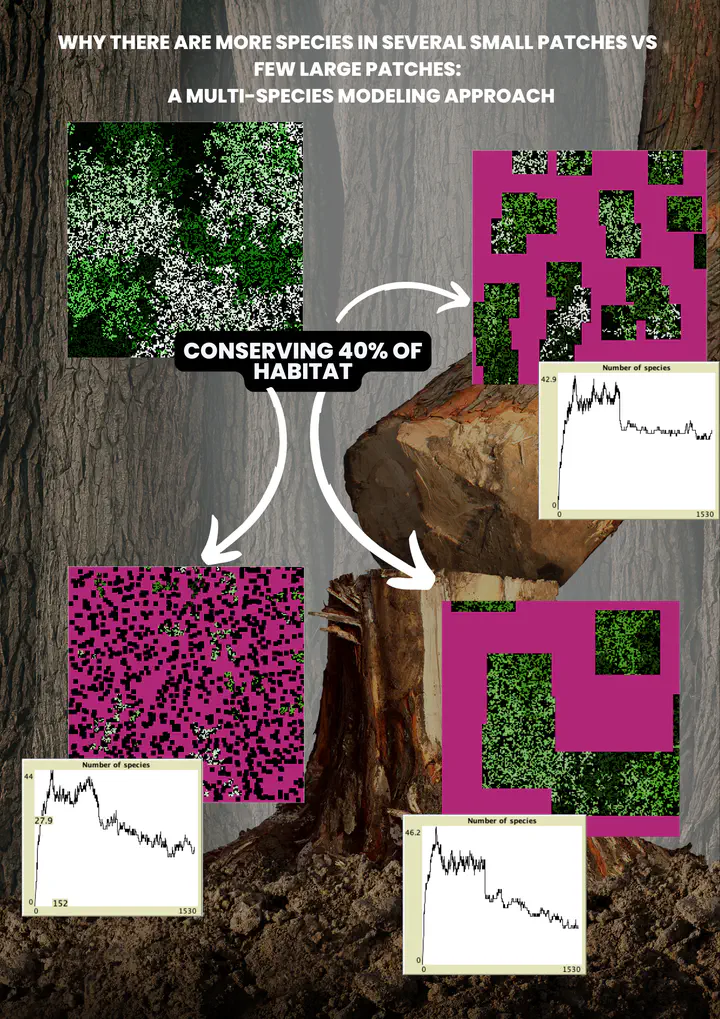More Species in Small Patches vs. Large Patches: Insights from Modeling

Biodiversity around the world is declining due to the loss of natural habitats. When trying to protect what is left, conservation agencies often prioritize preserving one large habitat area over several smaller areas of the same total size. However, recent studies suggest that preserving multiple smaller areas can actually be more effective for protecting species.
To better understand this, we used computer models to simulate how species communities respond to different habitat configurations. Our models analyzed three types of scenarios: species that do not compete with each other, species that can choose where to live, and species that compete for space. We also considered how far species can move (disperse), how quickly they reproduce, and how fast they go extinct.
The results show that, in most cases, having several smaller habitat patches protects more species than one large patch of the same total area. The only exception is when the species cannot move between the smaller patches and the patches are too small to support healthy populations on their own. Dispersal ability plays a key role: species that can move long distances tend to spread out evenly across the landscape, which reduces diversity, making them benefit less from having multiple small areas. On the other hand, species with lower dispersal ability tend to cluster in specific areas, increasing local diversity, so they benefit more from smaller areas, as long as they are not completely isolated.
These findings provide important insights into the best strategies for conserving biodiversity. While conventional wisdom has often favored preserving one large habitat, our models suggest that multiple smaller protected areas may often be a more effective approach, as long as the patches are large enough and connected enough for species to thrive. This is an important consideration as conservation agencies make decisions about how to protect the rapidly declining natural habitats around the world.
- You can read the full article here